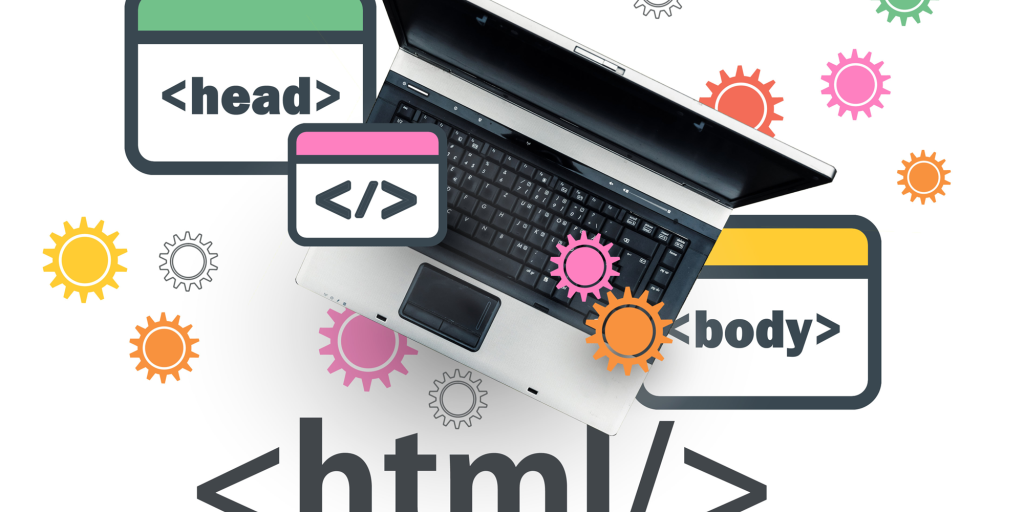Experience the thrill of web building! This vibrant field surprises us with revolutionary advancements every year. As we excitedly await 2024, let’s examine future trends that will shape website design and experience.
From HTML coding to web development, much has changed. It has changed dramatically due to technology and user preferences. This blog post will explore the emerging trends that will transform web development.
Mobile-first strategies, progressive web apps (PWAs), voice user interface (VUI), AI, VR, and AR will take you on an exciting ride. These game-changers will improve the user experience and enable tailored web interactions.
Grab your digital passport and accompany us on a thrilling 2024 web development adventure! Let’s begin!
The Evolution of Web Development: From HTML to AI
Web development has advanced dramatically. HTML, the backbone of modern webpages, started it all. Developers manually coded text, graphics, links, and tables. Web development is advanced with technology. CSS gives developers more design flexibility to segregate content from display. JavaScript adds interaction and dynamic aspects to webpages, making them more engaging.
Content Management Systems (CMS) like WordPress and Joomla make website creation and management easier for non-technical people. This democratisation of web development gave firms and individuals new options.
As mobile devices became ubiquitous, responsive web design became essential. Websites are needed to adapt smoothly to numerous screen sizes and resolutions for excellent smartphone and tablet user experiences.
Today, artificial intelligence (AI) will transform website design and personalisation. AI can assess user activity data, predict needs, and provide real-time, tailored experiences.
Web development has exciting prospects, from performance and efficiency improvements in front-end frameworks like ReactJS or AngularJS to scalable back-end technologies like Node.js or GraphQL. Web development trends are always changing. As developers push the limits with new technologies like AI-driven chatbots and NLP-powered voice-controlled interfaces, we can only fathom what is ahead on this exciting voyage into the future!

Mobile-First Approach: The Rise of Mobile Web Development
The fast progress of technology has changed how we acquire and consume information. Mobile web development is rising as smartphones become essential to our lives.
Today’s busy folks depend on their phones to keep connected and informed. Businesses are realising they must prioritise mobile-friendly user experiences.
Mobile-first web development prioritises mobile website design and optimisation above desktop versions. This provides smooth navigation, faster load times, and responsive layouts across devices.
Businesses can reach more customers and improve browsing by prioritising mobile web development. Mobile-optimised websites boost conversions and user engagement.
As responsive design and adaptive layouts gain popularity, developers have more options to create visually appealing and functioning websites across screen sizes. HTML5 and CSS3 make it easier than ever to create user-friendly interfaces that work on PCs and smartphones.
Businesses must adopt the mobile-first approach in 2024 and beyond to compete in the digital age. Brands can lead in user experience by investing in responsive design and guaranteeing optimal performance across all devices.
In today’s smartphone-dominated society, mobile web development is essential. Businesses must adapt or risk falling behind consumers who want information on the go.
Let’s toast the rise of mobile web development, which shows no signs of slowing! You can read your favorite blog on your phone or shop online with ease, so the mobile revolution is here to stay.
Progressive Web Apps (PWAs): Bridging the Gap between Websites and Apps
Progressive online Apps (PWAs) have revolutionised online development. These creative apps combine the best of internet and native apps for a smooth user experience. With PWAs, consumers may get an app-like UI in their browsers without installing it.
PWAs’ offline functionality lets consumers access material without an internet connection. This feature alone has changed web app interaction. We no longer have connectivity or loading issues.
Another benefit of PWAs is cross-platform and device interoperability. PWAs may be viewed on any browser-enabled device, making them versatile and cost-effective for organisations.
PWAs also offer an immersive user experience like native mobile apps, bridging the gap between websites and apps. To engage consumers, they use push alerts, background synchronization, and home screen installation prompts.
Along with these benefits, progressive web apps offer better security than traditional websites. HTTPS protocols and background service workers prevent data breaches and protect sensitive data.
Progressive web apps offer improved functionality like native mobile apps, changing how we view websites. This technology will effortlessly connect websites and apps in 2023 and beyond, becoming more common in our daily lives!
Voice User Interface (VUI): The Impact of Voice Command Technology on Web Development
Voice command technology has revolutionised web creation. Voice User Interface (VUI) is making websites and apps more intuitive and user-friendly.
VUI lets users speak commands instead of typing or clicking. This hands-free method improves accessibility for people with physical limitations and makes the experience smooth for everyone. Imagine utilizing voice commands to navigate a website or ask questions.
Web developers are using VUI to construct natural language-responsive voice-enabled interfaces. Speech recognition technologies and connection with Amazon Alexa or Google Assistant must be considered.
Voice search is another VUI-driven web development trend. Businesses must optimize webpages for voice search to be competitive as smart speakers and virtual assistants become more prevalent.
VUI also enables tailored website experiences. Websites can personalize information and recommendations by evaluating user behavior. More personalization makes the user experience more engaging and tailored.
Web developers should expect increasingly complex features as VUI evolves. Smarter natural language processing algorithms will grasp complex questions and context-specific responses. VUI-driven web apps will benefit from IoT device integrations.

Artificial Intelligence (AI) in Web Development: Enhancing User Experience and Personalisation
AI is transforming several industries, including web development. AI is changing website design and optimization by analyzing massive quantities of data and making smart judgments.
AI improves user experience in personalisation. AI systems may customize information for each visitor by assessing behavior, preferences, and demographics. Customization boosts engagement and conversions.
AI chatbots are also growing in popularity on websites. These virtual assistants can answer questions and guide users in real-time. Chatbots automate customer service while providing a personalized experience, saving businesses and customers time.
Predictive analytics is another fascinating AI web development application. Websites can predict user behavior and requirements before they express them using machine learning algorithms. Businesses can come up with appropriate ideas to improve the browsing experience.
AI automates A/B testing and data-driven website optimization to improve performance. These automated techniques let developers focus on generating novel designs instead of manually testing versions for hours.
Virtual Reality (VR) and Augmented Reality (AR): Immersive Technologies Shaping
VR and AR will transform web development in the future. Immersive technologies have revolutionized gaming and entertainment, but their potential in web development is fascinating.
Users can fully immerse themselves in virtual reality and engage with digital settings. However, augmented reality enhances our physical surroundings with digital information. VR and AR can change how we see and use websites.
Imagine exploring an online store with VR goggles, seeing things up close in 3D, and virtually trying them on before buying. AR technology in web development lets you aim your smartphone camera at your living room to explore how different furniture items might appear in it without leaving home!
VR and AR in web development can provide virtual tours of real estate properties or interactive learning experiences that bring learning materials to life. Immersive technologies will boost user engagement and give firms new ways to market.
Any new trend has hurdles that must be overcome for general adoption. Some users cannot afford VR/AR devices, limiting accessibility. Creating high-quality VR/AR experiences demands expertise and resources.
However, as technology advances and becomes cheaper, VR and AR will become more common in web creation by 2024.





